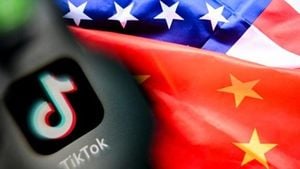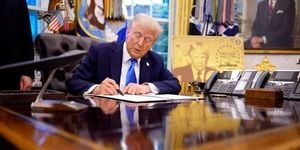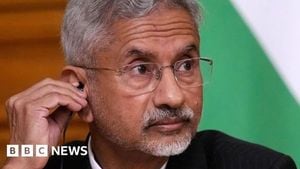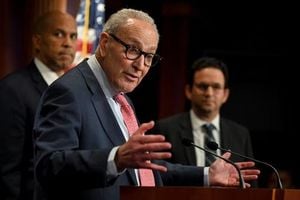It was a phone call that many in Washington and Beijing had been waiting for. On September 19, 2025, former President Donald Trump and Chinese leader Xi Jinping spoke for nearly two hours, and Trump quickly claimed afterward that the two had approved a long-anticipated deal to spin off TikTok’s U.S. operations. Yet, as with so many U.S.-China negotiations, the devil is in the details—and the details here are anything but simple.
According to CNN, Beijing’s willingness to engage on TikTok marks a shift from years of resisting any move that would see the viral video app—one of China’s most successful global tech exports—fall under American control. But rather than a capitulation, analysts see Beijing’s move as a calculated play, using TikTok as a bargaining chip to extract broader concessions from the U.S. on issues like tariffs, investment restrictions, and export controls.
“Given Trump’s 180-degree turn and now, blatantly political self-interest-fueled interest in owning TikTok, Beijing has most likely deftly leveraged an app that matters much less to its political establishment than it does the MAGA movement core to secure concessions,” Brian Wong, an assistant professor at the University of Hong Kong, told CNN. Wong and other experts suggest that China’s leaders are focused on “bigger fishes to fry.” The TikTok deal is just one piece of a much larger puzzle.
At the heart of the negotiations is TikTok’s recommendation algorithm—the “secret sauce” that’s driven the platform’s explosive growth, attracting 170 million American users and more than 1.5 billion globally. This AI-powered system suggests videos tailored to each user’s preferences, keeping people glued to their screens and advertisers eager to spend. But that same technology is now a major sticking point. U.S. law, as CNN and CBS MoneyWatch report, explicitly bans any cooperation with ByteDance, TikTok’s Chinese parent, on the operation of content recommendation algorithms. Meanwhile, Chinese law prohibits the export of such technology without government approval.
The framework hashed out in Madrid this week, as described by Chinese officials and reported in The Associated Press and CNN, attempts to thread this needle. It covers not only TikTok’s U.S. spin-off but also “reducing investment barriers and advancing relevant economic and trade cooperation.” China’s official statement, released by its Foreign Ministry, emphasized that any solution must “comply with China’s laws and regulations and take into account the interests of both sides.” The readout also urged the U.S. to “refrain from imposing unilateral trade restrictions” and to “provide an open, fair and non-discriminatory environment for Chinese investors.”
So, what does the deal actually look like? While no final agreement has been signed, both sides appear to be moving toward a licensing arrangement. Under this plan, a U.S. entity would get legal permission to use TikTok’s algorithm under certain terms, but ByteDance would not relinquish full ownership or control. “So it would be like they’re renting the algorithm rather than selling it,” Sarah Kreps, a nonresident senior fellow at the Brookings Institute, told CBS MoneyWatch. This could allow ByteDance to retain access to internal TikTok metrics and to update the algorithm, much like a software vendor can patch or upgrade licensed software. The Wall Street Journal reported that TikTok’s engineers would re-create the content-recommendation systems for a new U.S. app, using technology licensed from ByteDance.
But this arrangement raises thorny questions. As Lauryn Williams at the Center for Strategic and International Studies put it, the algorithm is TikTok’s “secret sauce.” Its ability to quickly learn user preferences and keep people engaged is unmatched by other platforms. The U.S. government remains wary, with national security concerns at the center of congressional efforts to force a sale or ban the app outright. The Justice Department has previously warned that ByteDance could be compelled by Chinese authorities to hand over sensitive American user data, and in 2022, TikTok acknowledged that China-based employees could access U.S. data in certain circumstances.
To address these concerns, the proposed framework would require strict controls on data access and algorithm updates. William Akoto, an assistant professor at American University, told CBS MoneyWatch that the deal must ensure China-based engineers cannot access the U.S. version of TikTok, and that the algorithm cannot send user data back to China or be updated from abroad. Wang Jingtao, a deputy director of China’s Cyberspace Administration, indicated that the deal would include entrusting a partner with handling U.S. user data and content security, though specifics remain unclear.
Meanwhile, the broader context of U.S.-China relations looms large. The Madrid talks, which produced the TikTok framework, also included discussions about easing investment barriers and advancing economic cooperation. Treasury Secretary Scott Bessent, who led the U.S. delegation, expressed confidence that a broader trade deal is near, with reciprocal tariffs set to take effect in November. The Supreme Court is also reviewing a high-stakes legal challenge to Trump’s tariffs, with oral arguments scheduled for early November—an unusually swift timeline for such a consequential case.
Amidst these developments, both sides are keen to keep the diplomatic momentum going. Trump announced that he and Xi will meet at the Asia-Pacific Economic Cooperation (APEC) summit in South Korea from October 30 to November 1, 2025. Xi has agreed to visit the United States “at an appropriate time” in the future, and both leaders are expected to continue their discussions in a series of meetings over the coming months.
For Beijing, the TikTok negotiations have offered a chance to show flexibility and pragmatism. As Yun Sun, director of the China Program at the Stimson Center, told CNN, “Now Beijing sees the opportunity to improve the relations with the U.S. and TikTok suddenly shifted from a ‘matter of principle’ to a matter that is negotiable. There are bigger fishes to fry.” The People’s Daily, the Communist Party’s official newspaper, echoed this sentiment, describing the framework as “mutually beneficial” and stressing the importance of “mutual respect, peaceful coexistence and win-win cooperation.”
Yet, for all the positive spin, the deal remains far from done. The U.S. government has not publicly confirmed the details of the framework, and a White House spokesperson told CBS MoneyWatch, “Any details of the TikTok framework are pure speculation unless they are announced by this administration.” The fate of TikTok’s algorithm, the security of U.S. user data, and the broader economic relationship between the two superpowers are all still up in the air.
As the world watches, the TikTok saga has become a microcosm of the broader U.S.-China rivalry—one where technology, trade, and national security are deeply intertwined. The next chapter will unfold at the APEC summit, where Trump and Xi will face off not just over a social media app, but the future of global tech leadership and economic cooperation.





